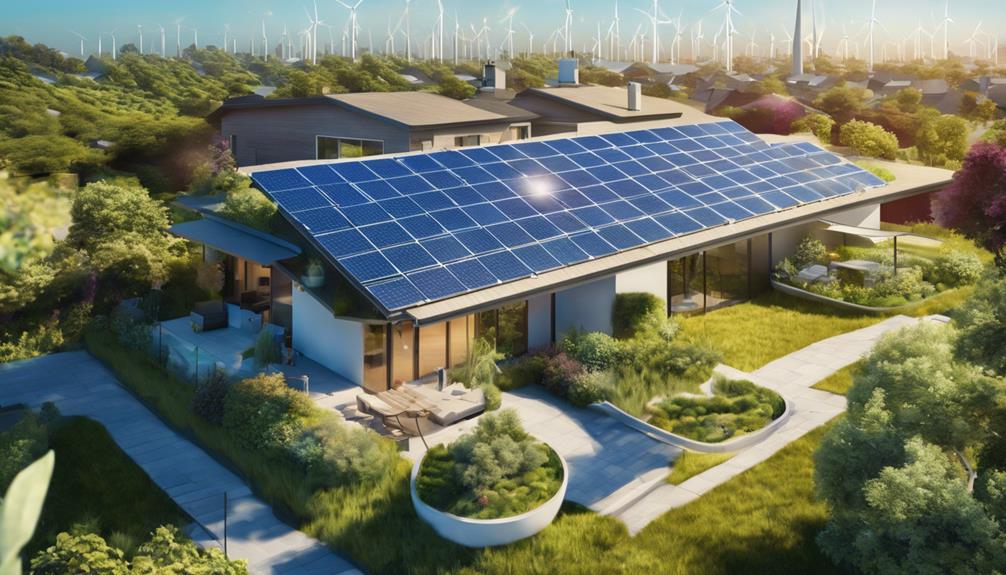
Solar energy has become a prominent topic in the world of renewable energy, and for good reason. As the demand for sustainable energy solutions grows, understanding the costs associated with solar technology, particularly monocrystalline solar panels, is essential for homeowners and businesses alike. In this detailed guide, we will explore the factors influencing the monocrystalline solar panel price, their advantages, and how to make an informed decision when investing in solar energy.
What Are Monocrystalline Solar Panels?
Monocrystalline solar panels are a type of photovoltaic (PV) technology made from a single crystal structure of silicon. This manufacturing process gives these panels a distinctively high efficiency and longevity compared to other types of solar panels, such as polycrystalline or thin-film. The efficiency of monocrystalline panels typically ranges between 15% to 22%, which means they can convert a higher percentage of sunlight into usable electricity. Understanding the unique characteristics of monocrystalline solar panels helps in assessing their price and overall value.
Factors Influencing Monocrystalline Solar Panel Price
The price of monocrystalline solar panels is influenced by several factors, including manufacturing costs, technology advancements, and market demand. Firstly, the purity of silicon used in monocrystalline panels is higher than that in polycrystalline panels, which contributes to a higher upfront cost. Secondly, technological advancements in production methods, such as the use of PERC (Passivated Emitter and Rear Cell) technology, can also impact prices positively by increasing efficiency and reducing overall energy costs. Lastly, supply and demand dynamics in the solar market can affect pricing. For instance, as more consumers shift towards renewable energy solutions, the increased demand can drive up prices, while advancements in manufacturing may lead to cost reductions.
Average Monocrystalline Solar Panel Price Range
As of 2023, the average price range for monocrystalline solar panels typically falls between $0.70 to $1.50 per watt. However, this price can vary based on factors such as location, manufacturer, and size of the solar system being installed. For a typical residential solar installation, which may range from 5kW to 10kW, the total cost of panels alone can range from $3,500 to $15,000 before any incentives or tax credits. It’s essential to consider these price ranges when budgeting for solar installation.
Cost-Benefit Analysis of Monocrystalline Solar Panels
When evaluating the price of monocrystalline solar panels, it’s crucial to conduct a cost-benefit analysis. While the initial investment can be higher compared to other types of solar panels, the long-term savings on electricity bills can be substantial. Monocrystalline panels often have a longer lifespan and higher efficiency, which means they can produce more electricity over time. This efficiency translates into lower costs per watt over the panel’s lifespan. Additionally, many solar panel manufacturers offer warranties of 25 years or more, providing further assurance regarding the investment. Considering these factors, monocrystalline solar panels can provide excellent value in the long run.
Government Incentives and Financing Options
To ease the financial burden of purchasing solar panels, various government incentives and financing options are available. In many regions, tax credits, rebates, and grants can significantly reduce the upfront costs associated with installing monocrystalline solar panels. For example, the Federal Investment Tax Credit (ITC) allows homeowners to deduct a significant percentage of the cost of installing solar from their federal taxes. Additionally, many solar companies offer financing options such as solar loans or leases, making it easier for consumers to invest in solar technology without paying the full amount upfront. Understanding these options can help potential buyers make informed decisions about their solar investment.
Understanding Installation Costs for Monocrystalline Solar Panels
While the price of the panels themselves is a crucial factor, installation costs also play a significant role in the overall investment. Installation costs for monocrystalline solar panels can vary based on the complexity of the installation, the location of the home, and local labor rates. Typically, installation costs can add an additional 20-30% to the total price of the system. It’s essential to obtain multiple quotes from reputable solar installation companies and ensure they are familiar with the specific requirements for installing monocrystalline panels. Proper installation is critical for maximizing efficiency and ensuring the longevity of the system.
Comparing Monocrystalline with Other Solar Panel Types
When considering the price of monocrystalline solar panels, it’s helpful to compare them with other types of solar panels. Polycrystalline panels are often less expensive, typically ranging from $0.50 to $1.00 per watt, but they usually have lower efficiency rates. Thin-film solar panels are another alternative, known for their lightweight and flexibility, but they also have lower efficiency and shorter lifespans compared to monocrystalline panels. Ultimately, the choice between these options should be based on individual energy needs, budget, and space availability. Monocrystalline panels may offer a higher initial cost but can provide better performance and efficiency in the long run.
Making the Right Choice: Is Monocrystalline Right for You?
Deciding whether to invest in monocrystalline solar panels involves weighing the initial costs against potential long-term benefits. If you have limited roof space or live in an area with frequent overcast days, the higher efficiency of monocrystalline panels may be advantageous. On the other hand, if you have ample space and a tighter budget, exploring polycrystalline or thin-film options may be worthwhile. Ultimately, understanding your energy needs, local climate conditions, and available incentives will help you make an informed choice that aligns with your financial goals and sustainability objectives.
In conclusion, the monocrystalline solar panel price reflects a combination of factors including manufacturing costs, technology, and market dynamics. While the upfront costs may be higher, the long-term benefits in terms of efficiency and savings make them a compelling choice for many consumers. By considering government incentives, installation costs, and comparing with other solar panel types, you can make an informed decision that best suits your energy needs and budget.





